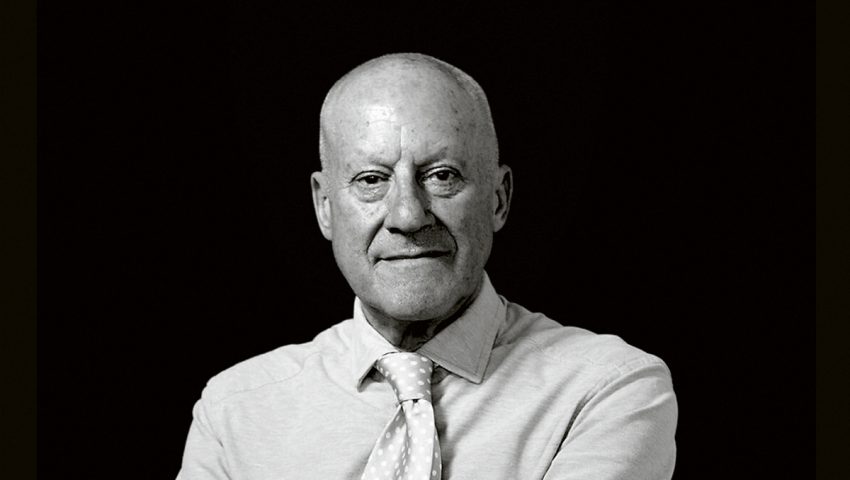In 1935, in Manchester, the future great architect Norma Foster was born into a poor family and made an enormous contribution to architectural, interior and furniture design. His name is associated with the rapid development of trends such as high technology. Norman Foster was also one of the first to think about sustainable architectural design.
Biography of Norman Foster
Norman Foster’s path to the podium in the world of architecture has not been an easy one: “From the thorns to the stars” is how one might describe the professional development of the future winner of the Imperial and Pritzker Prizes.
His parents, Robert and Lillian Foster, were simple, hard-working people. His father worked at the Metropolitan Vickers factory in Trafford Park, and his mother as a handyman. There was no money to pay for an elite education. Moreover, to somehow help the parents pay off the debts, Foster left school at 16 and also went to work. Education at school did not bring him joy either, because he was constantly humiliated and made fun of by his classmates. Norman spent most of his time at school with books, which became his true friends. He was fascinated by trains, aviation and any kind of machinery in general. You could say that his fascination with architecture began with a book given to him by his parents. Frederick Gibberd’s textbook on Frank Wright’s architecture encouraged the young man to become so fascinated by the subject that he began to literally disappear into the library in search of new editions on subjects that interested him. In the library, Foster underwent a veritable course of self-education, which helped him later in life.
Before he could go to university, Norman Foster had time to work in the city’s finance department, serve in the army and take a job as a junior officer in one of Manchester’s architectural practices. Even a job that was far from the creative heights, the young man was very attracted by the fact that the city office was housed in the most interesting building, built in the pseudo-Victorian Gothic style. The clerk, doing his main job, tried to get close to the peculiarities of the architecture of the municipality.
In 1956, Norman Foster still passed the examination and entered the University of Manchester in the Department of Architecture and Town Planning. During his studies he had a very tight financial situation, so the future architect moonlighted in a furniture shop and delivered ice cream. But it was architecture, interior planning and design that became his life’s work. He had a flair for drawing, and even before going to university, he worked as an assistant director at John E. Beardshaw and Partners, entered a competition and won a silver medal from the British University for his drawing of a windmill.
After successfully graduating from Manchester University, Foster was able to obtain a scholarship to continue his studies at the Yale School of Architecture. It was here that he obtained his master’s degree and met his future partner Richard Rogers.
The establishment of Norman Foster’s career
Studying the drafting work of his fellow architects in Manchester, he saw that professionalism in the field was lacking. After receiving the necessary education, but still improving himself, Foster, together with his friend Richard Rogers, began to travel in America for a year. After returning to England, the friends, together with their wives, set up their own architectural practice, Team 4. Success did not come immediately. The first projects were not very popular, although even then there were quite a few orders. Basically, the architects specialised in the design of industrial buildings. The first fairly significant building created by Norman Foster and Richard Rogers was Cockpit in Cornwall. The unusual idea of a building in the shape of a minimalist glass bubble started a new high-tech trend.
Foster was inspired by the work of Russian engineer Vladimir Shukhov to invent the new style. Norman Foster has subsequently mentioned in numerous interviews that Vladimir Shukhov was a catalyst for him in many architectural ideas.
The new high-tech style that had just emerged literally blew up the design world. Not everyone immediately accepted the new direction. To conservative-minded people, the trend seemed too provocative and uncomfortable. However, it was high-tech that made Norman Foster famous.
Foster Associates Company
In 1967, Team 4 disbanded and Norman Foster set up his own architectural practice, Foster Associates. Two decades later, the firm has become the world’s largest architecture and design practice. In the early years of the firm, Foster collaborated with the American architect Richard Fuller. This collaboration bore fruit. It was with Fuller that the architect came up with the idea of creating sustainable buildings. The idea of designing buildings that do not pollute the environment, consume less energy and integrate with nature was conceived when the firm was part of Team 4, but was not given a chance to live then.
In partnership with Fuller, Foster created and realised several ambitious projects, one of the most important being the Willis Faber & Dumas headquarters. In this project, Foster’s dreams of energy-efficient structures were realised. For the first time, there was a swimming pool on the roof of the building, which was not only a place for employees to relax, but also a kind of heat sink. The entire building is made of black glass. Norman Foster demonstrated that an office building can be both environmentally friendly and socially significant. Along with new ideas in architecture, the engineer has increased the importance of a comfortable environment for employees to work effectively.
Other famous projects include:
- Fred Olsen & Co. office and entertainment centre in Docklands;
- Computer Technology Limited’s inflatable office building;
- Sainsbury’s Visual Arts Centre at the University of East Anglia, Norwich;
- the air terminal building at Stansted Airport, London;
- HSBC bank building in Hong Kong.
You may also like:

